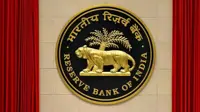China cuts yuan reference rate to lowest since 2011
10 Dec 2015
China has cut the yuan's reference rate to its weakest since 2011, fuelling speculation that the central bank is trying to release pent-up depreciation pressure before an expected increase in US interest rates.
 There are signs that the People's Bank of China has started guiding the yuan lower before the Federal Reserve acts next week, according to Bloomberg Intelligence economists Tom Orlik and Fielding Chen.
There are signs that the People's Bank of China has started guiding the yuan lower before the Federal Reserve acts next week, according to Bloomberg Intelligence economists Tom Orlik and Fielding Chen.
The authorities are conducting a ''stress test'' in the currency market before the Fed moves, Zhou Hao, a Singapore-based senior economist at Commerzbank AG, said in an interview on Tuesday.
The PBOC reduced the yuan's fixing, which limits onshore moves to 2 per cent on either side, by 0.1 per cent to 6.4140 a dollar, the weakest since August 2011. The spot rate dropped 0.17 per cent to close at 6.4280 in Shanghai, taking its decline to 0.5 per cent since the International Monetary Fund decided to admit the currency into the Special Drawing Rights basket. The yuan closed at a four-year low on Wednesday.
''We are moving to the next phase after the SDR inclusion as they are gradually stepping back and allowing a gradual depreciation,'' Eddie Cheung, a Hong Kong-based currency strategist at Standard Chartered Plc, told Bloomberg. ''The yuan is becoming more sensitive to the dollar and market forces."
A Bloomberg gauge of emerging-market currencies dropped to a record low on Tuesday on concern a Fed rate increase will spur capital outflows. Traders place an 80 per cent probability that the Federal Reserve will raise rates next week for the first time since June 2006.
A further weakening of the yuan's reference rate beyond 6.4085 a dollar could quickly lead to herd mentality and catalyse expectations for more depreciation, Jason Daw, Singapore-based head of Asian foreign-exchange strategy at Societe Generale SA, wrote in a note on Tuesday.
China surprised global markets on 11 August by cutting the yuan's reference rate by 1.86 per cent, which sent the currency into its steepest tumble in two decades and prompted the central bank to sell dollars to support its exchange rates at home and abroad. The PBOC also revamped its fixing mechanism, saying it was giving market forces greater sway.
The offshore yuan traded in Hong Kong's free market slipped 0.04 per cent to 6.4972 a dollar as of 4:43 pm Wednesday local time. That takes a three-day loss to 0.8 per cent, the most since August. The currency's 12-month non-deliverable forwards fell 0.03 per cent to 6.6980.
''We suspect that the PBOC has either refrained or reduced their intervention activities in the currency market,'' Roy Teo, a senior foreign-exchange strategist at ABN Amro Bank NV in Singapore, wrote in a note on Wednesday. ''We do not think that there is a change in the central bank's exchange rate policy. We expect the divergence between the offshore and onshore yuan to narrow in the coming weeks."
China's exports shrank 6.8 per cent in November in dollar terms from a year earlier, the customs administration said on Tuesday. That compares with the median forecast of a 5 per cent decline in a survey of economists. Imports fell for a record 13th straight month, leaving a trade surplus of $54.1 billion. Foreign-exchange reserves declined $87 billion, more than double the estimated $33 billion drop, as the PBOC sold dollars to prop up the yuan before the IMF's 30 November decision.

































